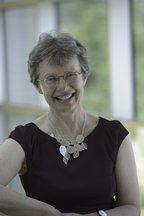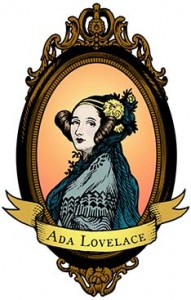Inspired by Ada: Celebrating Women in Science
To mark International Women’s Day and National Science Week, Dr Honora Smith, Mathematical Sciences, reflects upon what inspired her towards a career in mathematics, computing and operational research.
Last year I attended two celebrations of Ada Lovelace Day, which are celebrations of today’s women of science. These occasions were especially meaningful to me as my great-great-great-aunt (by marriage) was Augusta Ada Lovelace (1815 – 1852), daughter of Lord Byron.
She has been called the first computer programmer, as she wrote an algorithm (set of mathematical steps) suitable for programming Charles Babbage’s Analytical Engine to perform a particular task. That machine was never built, but what she foresaw was the practical application of computers to any number of different calculations, rather than being restricted to the one function for which they were built.
I’ve been reflecting on the huge changes that have taken place since Ada’s times in the ways women can access scientific knowledge and technological advances. Mary Somerville inspired and supported Ada in her scientific and mathematical endeavours. Mary herself had learnt algebra and mathematics from ladies’ magazines! She took Ada to parties attended by high society in London who wanted to hear of Babbage’s latest discoveries and inventions.
My interest in computers was very much inspired by Ada, with encouragement from my father. My gap year in 1970, before going to university to study mathematics, was spent with IBM in Birmingham. I carried out calculations on behalf of a car part manufacturer, Joseph Lucas, and programmed numerically-controlled machine tools.
This was my introduction to the world of computing, on an IBM 1130 , one of the small computers of that era when mainframe computers had to be housed in a room of their own. Only very few institutions possessed a computer then – a typical university might have one large computer hidden away somewhere in a basement that ran programmes printed on punched cards for every department. A fortunate department might have its own mini-computer, like the 1130.
My mathematical and computing endeavours were brought up-to-date when, in 2002, I came to the University of Southampton for a Masters in Operational Research (OR) , followed by a PhD. OR seeks to apply Mathematical and quantitative methods in general to practical applications that can be found in businesses, large organisations, both public and private, and many diverse fields.

In returning to mathematics and computing after a 15-year break to bring up a family, I was very aware of how technology had changed since my days of programming an 1130. With a laptop on every desk, it was astounding to see the changes in computing power for calculations.
Operational Research (OR) has afforded me insights into number of interesting practical applications, and I’ve seen many Masters students in OR leave the University for some great careers – for example with companies as diverse as British Airways, the AA and Tesco, and with many government departments and the NHS.
My own research has taken me to several developing countries, studying the locations of sustainable community health facilities in India for my PhD. More recently, I’ve been developing models for the location of HIV-AIDS test laboratories in South Africa. In this country, the field of healthcare modelling can bring efficiencies and better quality care in the NHS.
I’ve found OR is a great way to combine practical applications of mathematics with data analytics. I’m sure Ada Lovelace would have had great interest in the mathematical studies, computing technology and practical uses of OR that I have the privilege of working with.


Leave a Reply
You must be logged in to post a comment.